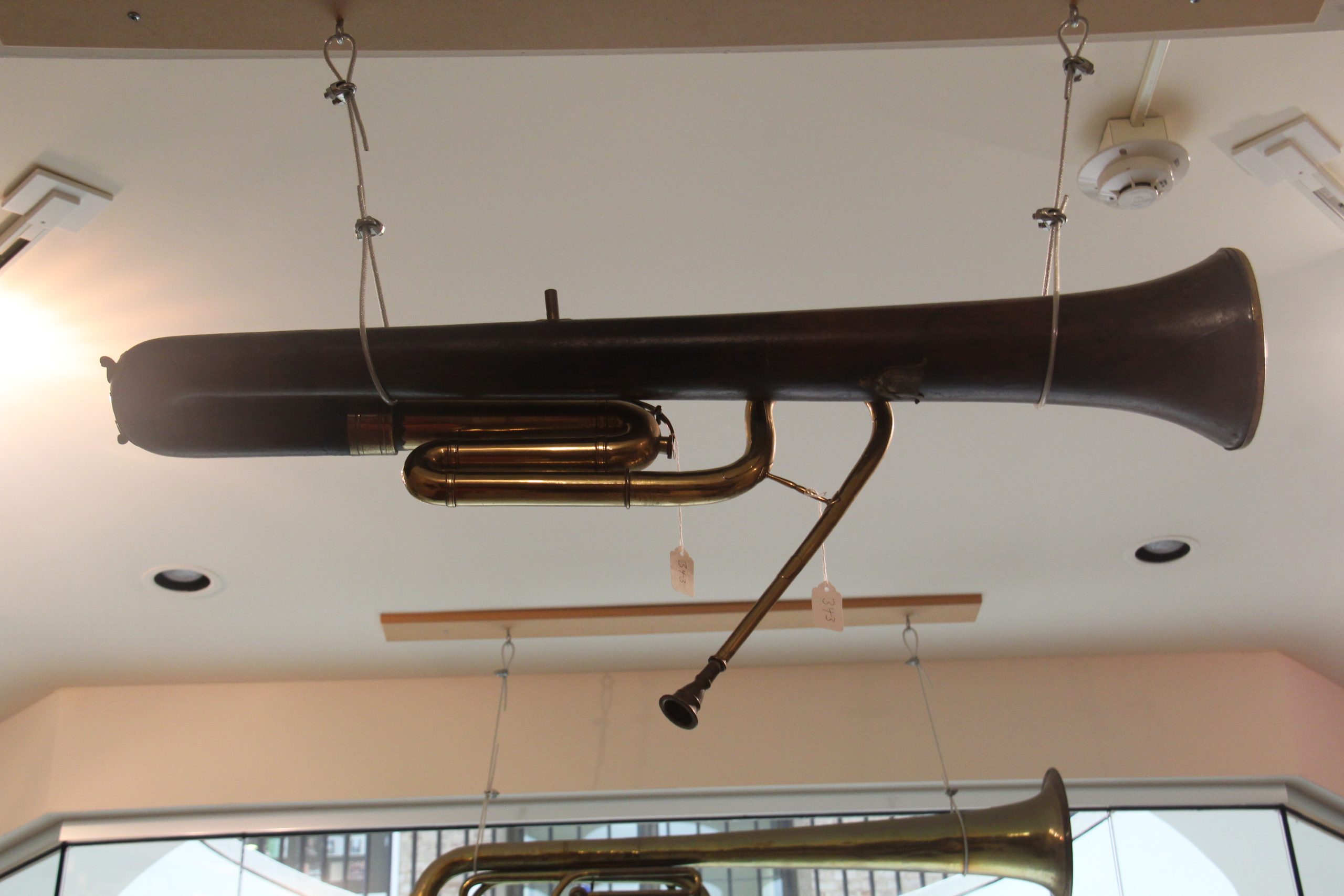Serpentine Horn
Details
- Origin: France
- Date Made: 1820 – 1830
- Collection: E 343
Description
Wooden bell tube, brass mouthpiece tube. 6 open finger holes, 1 brass key. Serpents intended for church use did not typically have keys, had open curves on their bodies, and were held upright. Serpents made for military use had smaller curves to make for easier transportation. The serpent is one of the only “brass” instruments constructed from wood.
The serpent was invented towards the end of the 16th century, likely by Eddy Guillaume, as a church instrument meant to strengthen the sound of the choir with its organlike sound. It was used widely throughout churches in 18th century Europe and adopted by some military bands in England and Germany before being replaced valved brass instruments. It is noted for its low, powerful tone, which was deemed sufficient to “support the voices of twenty robust monks,” even if played by a child.
“The serpent has a long association with church music. In France it was used to bolster and accompany plainsong from the late sixteenth century onwards. Its warm, resonant sound complemented male voices, and it found favor in English church bands during the eighteenth and nineteenth centuries. Played alongside the cello and the bassoon, it provided vital accompaniment in churches that could not afford organs.”
At the turn of the 19th century, some serpents began to include keys and allowed for greater range. Some metal and bassoon-shaped serpent variations also began to appear around this time. The instrument continued to be used by some Spanish bands and rural French churches through the late 19th to early 20th century.
Sources
- Britannica, T. Editors of Encyclopaedia. “serpent.” Encyclopedia Britannica, May 14, 2013. https://www.britannica.com/art/serpent-musical-instrument.
Daly, Cédric. “Serpent.” Instruments of the World: Virtual Encyclopedia. Accessed June 22, 2022. http://www.instrumentsoftheworld.com/instrument/158-Serpent.html.
“Serpent.” Met museum. Accessed June 22, 2022. https://www.metmuseum.org/art/collection/search/506816.

